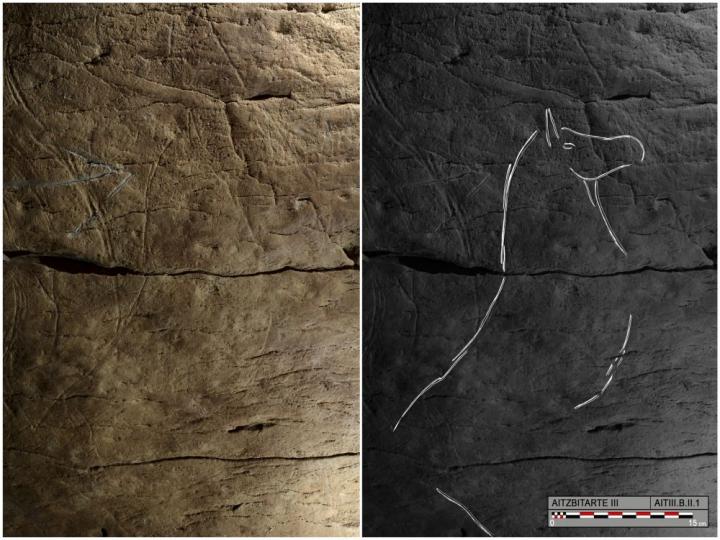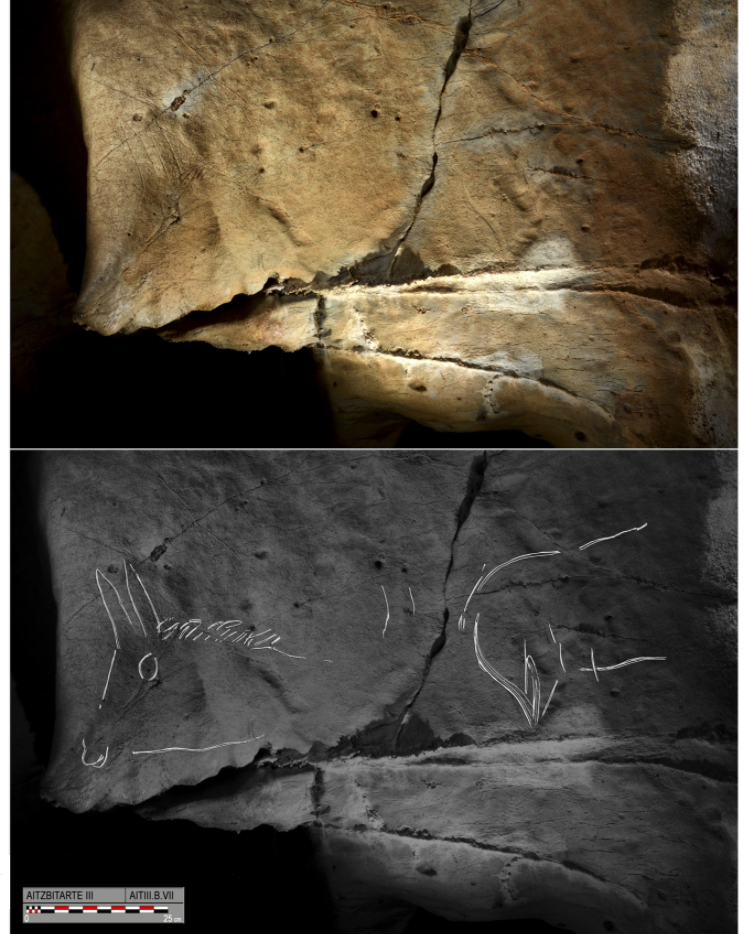
Spanish researchers reported today the discovery of rock art in a cave system in the Basque Country, in northern Spain. The 27,000-year-old art, which includes engravings of bison and horses, is characteristic of a cultural style common across Europe but which was never before seen in the Iberian Peninsula until now.
A clash of two cultures
“Western Europe has the biggest density of Palaeolithic cave art in the world, including the famous Altamira and Lascaux caves. It is especially concentrated in Northern Spain and Southwest France. Despite this, there was a void in what nowadays is the Basque Country. A decade ago, we started several survey projects in order to understand this absence. Consequently, we found more than 20 new [samples of] cave art — that is four times more than we knew before, including the four caves of Aitzbitarte hill,” Diego Garate of the Instituto Internacional de Investigaciones Prehistóricas de Cantabria in Spain told ZME Science.

Garate first performed surveys in the Aitzbitarte cave complex in Basque Country in 2015. Deep inside cave number five, the researchers found that the walls were covered in recent graffiti. Remarkably, next to them were also ancient cave paintings engraved thousands of years ago.
“Suddenly, under an ‘exit’ and an arrow written on the wall, a so some fine tracings that were not so recent. After some minutes I was able to see a bison drawing. This is how we started watching all the walls looking for other engravings,” Garate said.
“Some of them are in dangerous places, even after descending vertical slopes of 15 meters. Paleolithic people were very habituated to the underground landscape. This difficult access to the decorated areas was a real challenge when documenting and studying the artworks,” he added.
Scientists had been exploring the Aitzbitarte caves since the end of the 20th century. So far, they’ve recovered thousands of stone tools and butchered bones, suggesting the caves sheltered hunter-gatherers continuously over the span of ten thousand years.
When compared to other cultures, the Aitzbitarte cave art bears a striking resemblance to the style of the Gravettian cultural complex. An Upper Palaeolithic (Late Old Stone Age) culture, the Gravettian culture succeeded the Aurignacian to dominate much of Europe from around 29,000 BC.
The Gravettian people are famous for the many Venus figurines they created, which are widely distributed across Europe and into Siberia. Another famous prehistoric discovery of this period is represented by hand stencils in Cosquer Cave close to Marseilles, in the south of France.

Back at Aitzbitarte, Spanish researchers described Paleolithic animal engravings drawn in a Gravettian style in which the horns and legs lack proper perspective, and pairs of limbs are consistently depicted as “double Y” figures.
“We have compared these figures with others found in Europe using multivariate statistics and have concluded that their distribution coincides with the dispersion of the most frequent tools in the region about 27,000 years ago. The diffusion of this style largely agrees with finds of Noailles burins and Isturitz points, tools that appeared in the Western Pyrenees between 31,000 and 29,000 years ago and later spread towards southern France and finally reached the Mediterranean, where the most recent figures in this style are found,” Garate told ZME Science.
“These peculiarities differentiate them from other cave art in northern Spain. To give an example, while in Aitzbitarte they were engraving bison with these specific conventions, in the rest of the Cantabrian region they were painting red deer by applying the pigment with their finger-tips, however, certain details are common to different styles, such as the way of representing horses and the absence of perspective in both front and back legs. Therefore, despite the existence of particularities in each region, long-distance cultural exchange networks also existed.,” the researcher added.
In the future, Garate plans on exploring other caves in the region. He is sure more forgotten cave art is waiting to be found.
“These are the first remains of human artistic ability and some of them have been named World Heritage by UNESCO. Without a doubt, knowing them helps us understand who we are,” he said.
The findings appeared in the journal PLOS ONE.


